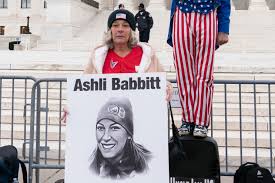
Introduction
Ashli Babbitt became a significant figure in the discussion surrounding the January 6th Capitol riots. As a protester who stormed the Capitol, her death during the incident has raised numerous questions regarding police response, the boundaries of protest, and accountability in high-stakes situations. The implications of her death resonate deeply in ongoing debates about security, justice, and the nature of political dissent in the United States.
The Circumstances of Ashli Babbitt’s Death
Babbitt, a 35-year-old Air Force veteran, was shot by a Capitol police officer while attempting to breach a barricaded door leading to the Speaker’s Lobby. The confrontation occurred amidst a violent attempt to overturn the 2020 presidential election results. The officer involved, who was later cleared of wrongdoing after an internal investigation, fired a single shot that struck Babbitt, resulting in her death. This incident was captured on video and subsequently went viral, sparking nationwide controversy and debate.
The Reactions and Investigations
Following her death, various reactions emerged, reflecting a divide in public opinion. Supporters of Babbitt view her as a martyr, representing a fervent dedication to their cause, while critics have condemned her actions and questioned the appropriateness of her protest. The Capitol Police faced scrutiny over their response and the broader implications of their use of lethal force in such scenarios. Multiple investigations were launched to determine the appropriateness of police force, and in August 2021, the Department of Justice announced no charges against the officer involved, stating that Babbitt posed a threat to lawmakers in the vicinity.
Conclusions and Implications
The events surrounding Ashli Babbitt’s death illustrate the complexities of modern protest and the tensions between public safety and individual rights. As investigations and discussions continue, Babbitt’s case has sparked renewed dialogue about the need for reform in policing tactics, especially in situations involving civil unrest. Moving forward, her death remains emblematic of the polarizing nature of political discourse in the United States, with implications that are likely to affect future policy and public sentiment. Understanding the events surrounding Babbitt’s actions and the subsequent police response is essential for communities grappling with similar issues of protest and authority in the contemporary political landscape.






